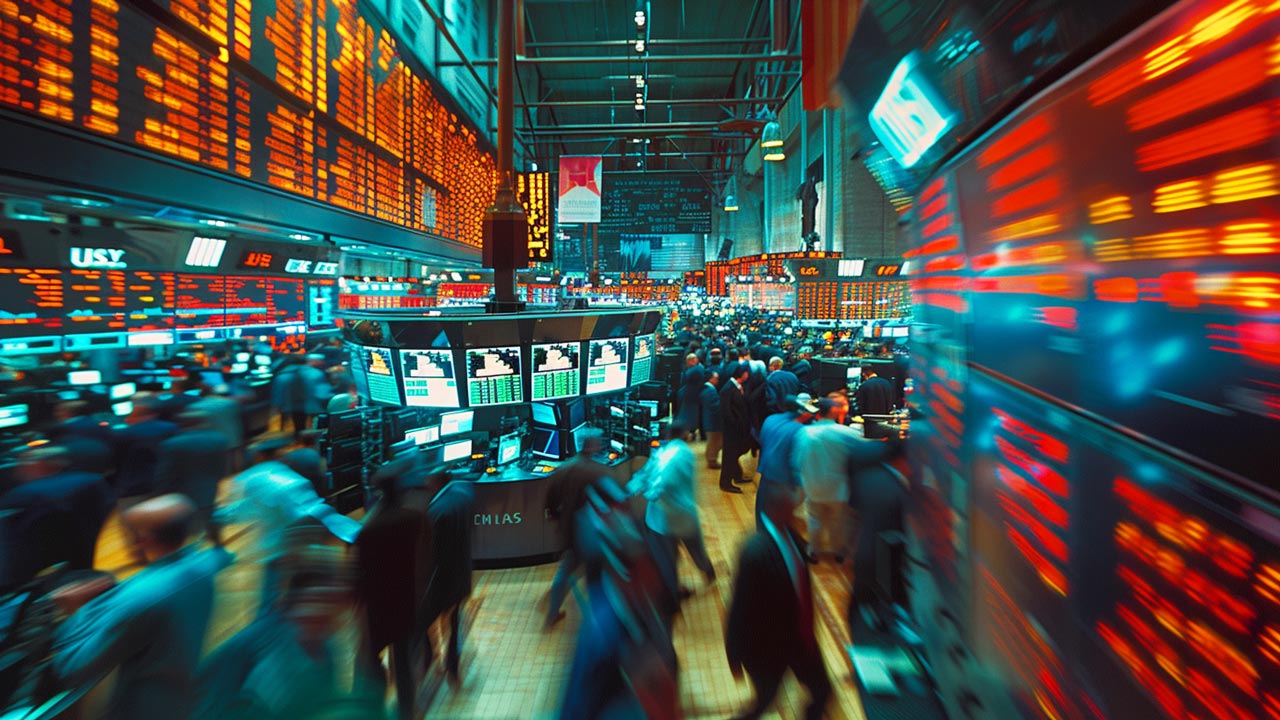Smart Buyers Know the Bid Before Buying
 This article was submitted by Joel Bauman, SchiffGold Precious Metals Specialist. Any views expressed are his own and do not necessarily reflect the views of Peter Schiff or SchiffGold.
This article was submitted by Joel Bauman, SchiffGold Precious Metals Specialist. Any views expressed are his own and do not necessarily reflect the views of Peter Schiff or SchiffGold.
One of the wisest questions any potential buyer can ask before they purchase an asset is, “How much would I receive if I sold this asset or product today?” In other words, “What is the bid on this asset?” Answering this one question alone can save an individual from making a foolish purchase.
Wise buyers understand the fundamental dynamics of the market. They are aware there is no single price for any product or asset. Instead, there is an “ask” price and a “bid” price.
The “ask price” (aka the “offer”) is the lowest price a prospective seller is willing to accept. The bid price is less intuitive. The bid is the highest price a prospective buyer is willing to pay for a product or asset.
Dealers create a market by simultaneously acting as sellers and buyers. Dealers earn a profit via buying an asset at the bid price and selling at the ask price.
Here is an example of a dealer quoting the bid and ask price for a contract of the Dow Jones Industrial Average also called “the Dow”:
The Dow
Bid Price: $19,934.70
(Spread: $6.00)
Ask Price: $19,940.70
With this dealer, an individual may buy a contract representing the Dow at the asking price of $19,940.70. They may also sell that same contract at the bid price of $19,934.70. The buyer also knows the difference between the bid and the ask, which in this example is $6.00 (calculated by $19,940.70 – $19,934.70). This difference is called “the spread”.
With knowledge of the spread, a prospect buyer knows their nominal breakeven level. Assuming the spread stays constant, it’s necessary for the Dow to appreciate at least $6.00 for a buyer to break even. This is a reasonable spread since to cover the spread the Dow only needs to move three-hundredths of a percent (00.0033%), a very small amount.
If the spread is high, then the buyer should be alert. For example, some numismatic coin dealers sell Royal Canadian Mint 1/4oz gold Polar Bear coins, see below.
RCM 1/4oz gold Polar Bear coin
Bid Price: $301.20
(Spread: $96.47)
Ask Price: $397.67
The spread on this coin is $96.47. All else equal, this means the gold price has to rise by 32% to break even in nominal terms. Buyers of this coin dig themselves into a hole with such a terrible spread!
What stops a buyer from getting ripped off with a terrible spread? Competition does. While some unfair companies will try to swindle an unsuspecting buyer into a deal with a terrible spread, other companies do not. This is why it’s important to know and trust your dealer, and to always know the spread before buying. (For more info on the types of dealers who try and scam buyers read Peter Schiff’s “Classic Gold Scams” report).
When a product’s spread is high, regardless of the dealer, this implies the product or asset is illiquid. Usually, the smaller the spread the more liquid the asset, but this is not always the case. In conjunction with the spread, I recommend looking at the average daily volume traded.
Here is a real world example of a relatively illiquid asset with a small spread. When I look up the virtual currency Bitcoin on a dealer called Coinbase, the spread is sometimes less than a penny.
Bitcoin BTC
Bid Price: $921.761
(Spread: $0.008)
Ask Price: $921.769
(Average Daily volume approximately $200 million)
This spread of $0.008 is encouraging. Bitcoin’s spread is less than the first example showing a CFD contract for the Dow Jones. At first glance, Bitcoin appears to be extremely liquid.
After taking two minutes of research to look up Bitcoin’s average daily volume, one will find its volume to be approximately $200 million. This may sound like a lot but compared to other currencies it’s a drop in the bucket. The British pound/US dollar trades an average of $330 billion daily, the euro/US dollar trade $600 billion daily, and the US dollar/yen trades about $580 billion daily.
Additionally, I inspected Coinbase’s market depth showing the volume for these quotes. I found the bid/ask quotes listed above are for only one Bitcoin, which means there is only one Bitcoin offered at $921.769 and the exchange is willing to pay $921.761 for only one Bitcoin. This is nothing! Anyone trying to buy and sell more than one Bitcoin on Coinbase will certainly pay more than a $0.008 spread. The exact spread will depend on how much Bitcoin is being transacted and the other bids and offers on the exchange at the time of the transaction.
While Bitcoin lacks liquidity relative to other major currencies no one can deny liquidity hasn’t been growing. Year after year Bitcoin’s average daily trading volume is increasing.
This brings me to my final point, which is to pay attention to the historical trends in volume. If an asset has a history of irregular or nonexistent periods of high volume, be on guard! For an asset might be liquid today but not tomorrow. Five minutes of research would have alerted any potential home buyer that the real estate boom of the 2000s was an unprecedented anomaly.
So before buying a car, stock, bonds, currency, or gold product know both the offer and the bid. The knowledge of the bid-ask spread, historical volume, and a little bit of common sense will protect buyers from life’s inevitable financial traps.
Get Peter Schiff’s most important Gold headlines once per week – click here – for a free subscription to his exclusive weekly email updates.
Interested in learning more about physical gold and silver?
Call 1-888-GOLD-160 and speak with a Precious Metals Specialist today!





 Cocoa prices have dumped since rocketing to a dramatic peak last month as an El Nino cycle winds down and traders rush out of the illiquid market. For now, depreciating fiat currencies are still keeping the cocoa price still far above its 2023 levels. Coffee has had a similar rise and subsequent correction — but now, inflation and other factors are conspiring to […]
Cocoa prices have dumped since rocketing to a dramatic peak last month as an El Nino cycle winds down and traders rush out of the illiquid market. For now, depreciating fiat currencies are still keeping the cocoa price still far above its 2023 levels. Coffee has had a similar rise and subsequent correction — but now, inflation and other factors are conspiring to […] California’s government bet that they knew better than the free market. And now millions are paying the price. The story begins in 1919, when the city of Berkley, California instituted legislation setting aside districts that would only allow the construction of single-family housing. The idea spread, and soon much of California’s urban areas had adopted the zoning policy. Today, approximately 40% of the total land in Los Angeles is […]
California’s government bet that they knew better than the free market. And now millions are paying the price. The story begins in 1919, when the city of Berkley, California instituted legislation setting aside districts that would only allow the construction of single-family housing. The idea spread, and soon much of California’s urban areas had adopted the zoning policy. Today, approximately 40% of the total land in Los Angeles is […] The yen was once known as a safe-haven currency for investors to protect themselves when broader markets are shaky or other currencies are dropping, but those days are numbered. A stable government and consistent (and low) interest rates have been some of the driving factors, but it’s the unwinding of that ultra-low interest rate policy that will be the yen’s “safe […]
The yen was once known as a safe-haven currency for investors to protect themselves when broader markets are shaky or other currencies are dropping, but those days are numbered. A stable government and consistent (and low) interest rates have been some of the driving factors, but it’s the unwinding of that ultra-low interest rate policy that will be the yen’s “safe […] Whenever an election year rolls around, domestic manufacturing becomes a more central theme of discussion. Candidates from both sides, who seem to disagree on almost everything else, never waver in their commitment to auto manufacturers in Detroit and the steel industry. Republicans and Democrats never forget to remind the American public that they will try […]
Whenever an election year rolls around, domestic manufacturing becomes a more central theme of discussion. Candidates from both sides, who seem to disagree on almost everything else, never waver in their commitment to auto manufacturers in Detroit and the steel industry. Republicans and Democrats never forget to remind the American public that they will try […] The wizards at the Fed and US Treasury have been forced to acknowledge that their “transitory,” inflation is, in fact, quite “sticky.” And with the inflation elephant now acknowledged by the circus of high finance, Treasury yields keep inching up, recently reaching 4.7% — the highest since November. The Fed is stuck: It needs to raise interest rates to tame inflation and […]
The wizards at the Fed and US Treasury have been forced to acknowledge that their “transitory,” inflation is, in fact, quite “sticky.” And with the inflation elephant now acknowledged by the circus of high finance, Treasury yields keep inching up, recently reaching 4.7% — the highest since November. The Fed is stuck: It needs to raise interest rates to tame inflation and […]